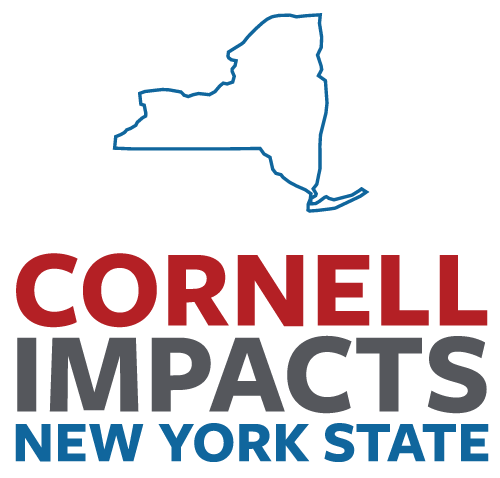Climate warming and lake browning - when dissolved organic matter from forests turns the water tea-brown - are making the bottom of most lakes in the Adirondacks unlivable for cold water species such as trout, salmon and whitefish during the summer.
A new study, "Concurrent warming and browning eliminate cold-water fish habitat in many temperate lakes," forthcoming in the journal Proceedings of the National Academy of Sciences, found that only about 5% of Adirondack lakes may continue to maintain water that is cold and oxygenated enough to support cold-water species given current trends.
New York's Adirondack Park is a state protected area where forests and lakes have been buffered from heavy development and pollution. It serves as a stronghold for many cold-loving wildlife species.
The study provides insights into changes in key ecosystem dynamics with potential consequences for the future of temperate lakes in the Adirondacks as well as elsewhere in northeastern North America and parts of Europe.
"Moving forward, as browning and warming both continue, it becomes increasingly important to identify lakes that can be used to provide cold-water fishes with places where they can still thrive into the future," said Stephen Jane, the paper's first author, formerly a Cornell Atkinson Center for Sustainability Postdoctoral Fellow in the Department of Natural Resources and the Environment in the College of Agriculture and Life Sciences when he worked on the study.
"It's imperative that we protect the modest number of buffered lakes in the Adirondacks from species invasions, nutrient and salt pollution, and other forms of environmental degradation," said Peter McIntyre, Ph.D. '06, (CALS) associate professor in the departments of Natural Resources and the Environment and Ecology and Evolutionary Biology, and the paper's senior author.
"After a few more decades of browning, most Adirondack lakes will become either too warm or too deoxygenated to support trout populations," he said. "This is a radical departure from the past, when trout fisheries in numerous lakes were celebrated by locals and tourists alike."
Increased browning is an unfortunate legacy of a century of acid rain, despite the prominent reduction in new acid inputs over the last few decades. As acidity has declined, ecosystems have become more productive at the same time that soils have suffered reduced capacity to absorb weak organic acids, leading to more dissolved plant matter flowing through the watershed into lakes, making them browner. Also, climate change has increased both the frequency of extreme precipitation events and the length of growing seasons, thereby promoting further runoff of organic matter.
Browner water creates greater heat trapping at the top of a lake, as the sun's rays are absorbed by the organic compounds in the water, leading to warming. At the same time, brown water blocks those rays from dispersing through the water column, which concentrates all solar heating in a shallow layer of warm, less-dense water that sits on top of colder water layer below.
In the study, the team placed sensors in 15 Adirondack lakes, which measured dissolved oxygen and temperature throughout each lake's water column. The sensors collected measurements hourly from June through mid-October. "That enabled us to get really high-resolution maps of the habitat within the water column that would be suitable for brook trout," Jane said.
They then measured rates of browning in a set of lakes with decades of historical data. These data enabled them to calculate relationships between browning and the gradients of temperature and oxygen levels with depth during the summer season. They applied their statistical findings to an existing database of 1,467 Adirondack lakes, and calculated which lakes contained potentially stressful conditions for trout over that summer period, based on understanding of the fish's thermal and oxygen tolerances.
During summer, cold-loving species go deeper to find suitably cold temperatures, but they still need plenty of oxygen.
The researchers found that only 1% of all Adirondack lakes were deeper than 30 meters, and that these deep lakes were unique in avoiding oxygen depletion from joint browning and warming. "Deep lakes have so much water that their oxygen is hard to deplete after it is refreshed by biannual mixing in spring and fall," McIntyre said.
Another 4% of lakes are very clear and in these lakes expansion of cold-water outpaces expansion of low oxygen zones. In these lakes, a little browning - but not too much - is beneficial, as it protects the cold water layer at the bottom from heat without driving oxygen depletion. These unusually clear lakes also provide good habitat for cold-water fish.
"Based on our calculations, just over 23% of all Adirondack lakes were in this very clear category in the 1980s," Jane said. "It's currently under 5%, so for almost 95% of the thousands of lakes in the Adirondacks, any further browning is going to be harmful to these cold-water species," Jane said.
Co-authors include Thomas Detmer, senior research associate; Siena Larrick '23; Eileen Randall, research technician; and Kurt Jirka, research support specialist, all in the Department of Natural Resources and the Environment; and Kevin Rose, a professor at Rensselaer Polytechnic Institute.
The study was funded by Cornell Atkinson, Cornell University, the Northeast Climate Adaptation Science Center, a David and Lucille Packard Fellowship and the United States Geological Survey.







